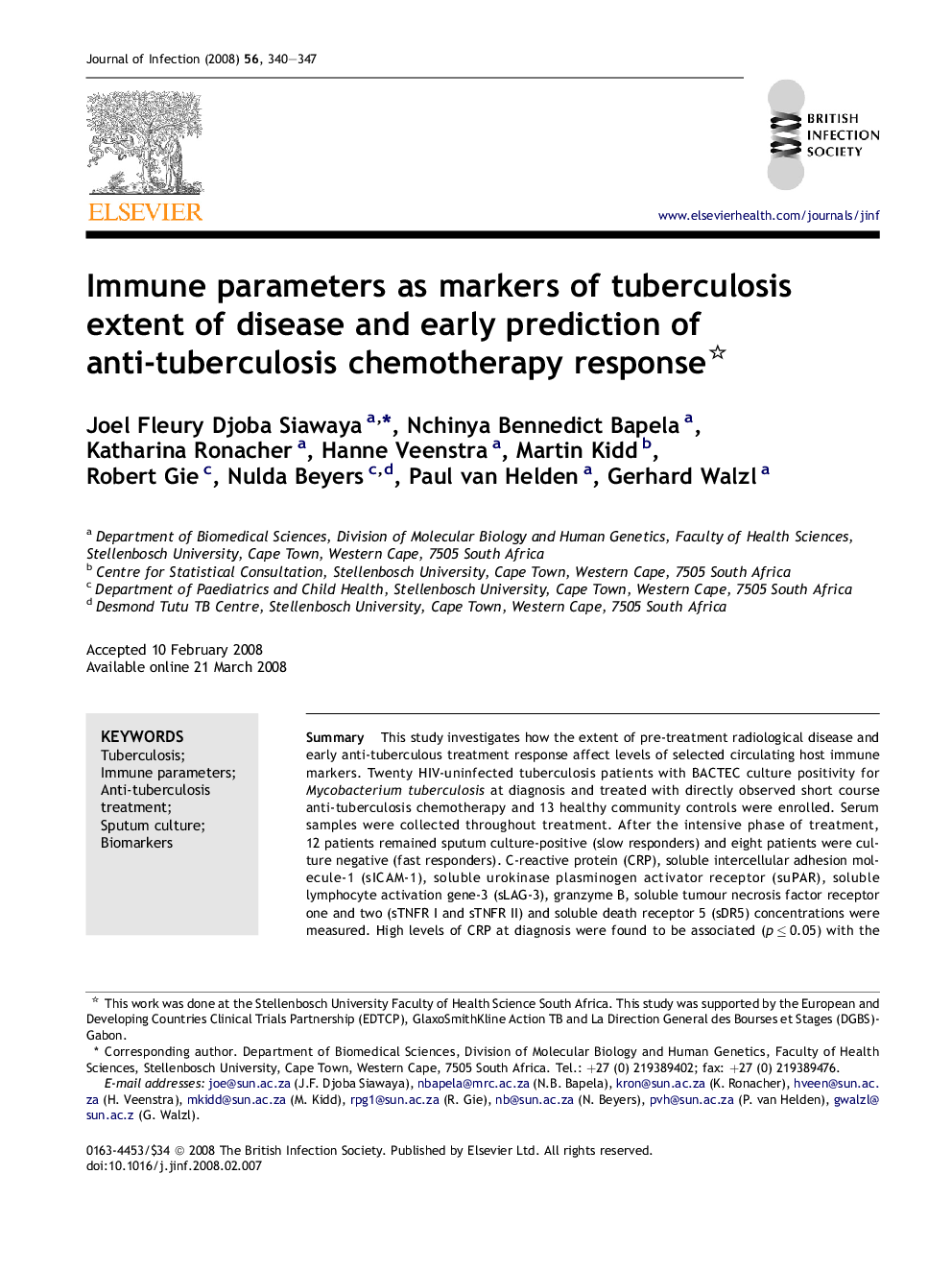| کد مقاله | کد نشریه | سال انتشار | مقاله انگلیسی | نسخه تمام متن |
|---|---|---|---|---|
| 3376253 | 1219720 | 2008 | 8 صفحه PDF | دانلود رایگان |

SummaryThis study investigates how the extent of pre-treatment radiological disease and early anti-tuberculous treatment response affect levels of selected circulating host immune markers. Twenty HIV-uninfected tuberculosis patients with BACTEC culture positivity for Mycobacterium tuberculosis at diagnosis and treated with directly observed short course anti-tuberculosis chemotherapy and 13 healthy community controls were enrolled. Serum samples were collected throughout treatment. After the intensive phase of treatment, 12 patients remained sputum culture-positive (slow responders) and eight patients were culture negative (fast responders). C-reactive protein (CRP), soluble intercellular adhesion molecule-1 (sICAM-1), soluble urokinase plasminogen activator receptor (suPAR), soluble lymphocyte activation gene-3 (sLAG-3), granzyme B, soluble tumour necrosis factor receptor one and two (sTNFR I and sTNFR II) and soluble death receptor 5 (sDR5) concentrations were measured. High levels of CRP at diagnosis were found to be associated (p ≤ 0.05) with the presence of multiple cavities on chest x-rays and high levels of suPAR and sICAM-1 at diagnosis were associated (p ≤ 0.05) with the extent of alveolar disease. Also significant were the associations between the level of granzyme B (p ≤ 0.01) and LAG-3 (p ≤ 0.05) at diagnosis, and the size of the cavities. The combination of diagnosis and week one measurements of selected serological markers in mathematical models was able to identify the fast responders with up to 87.5% accuracy and the slow responders with up to 83.3% accuracy These preliminary results suggest that predictive models for differential early treatment responses using combinations of host markers hold promise.
Journal: Journal of Infection - Volume 56, Issue 5, May 2008, Pages 340–347